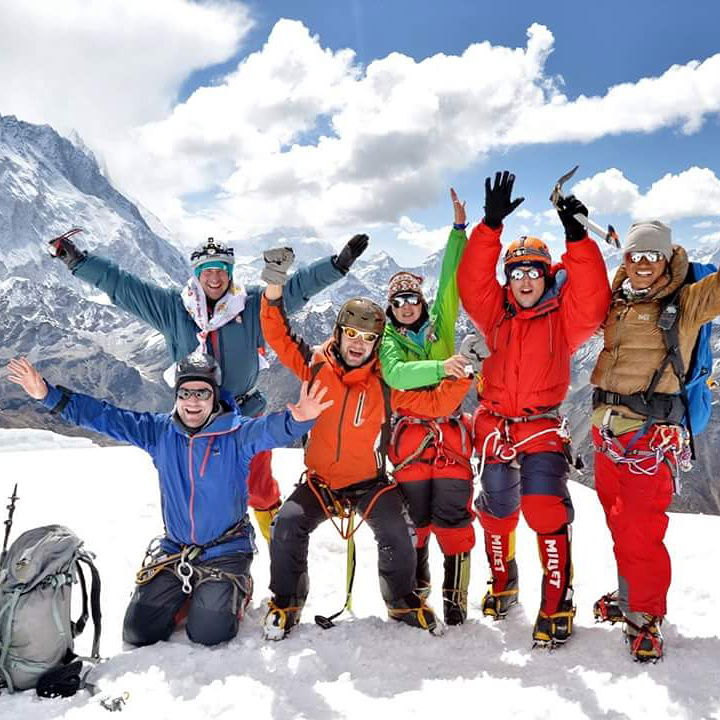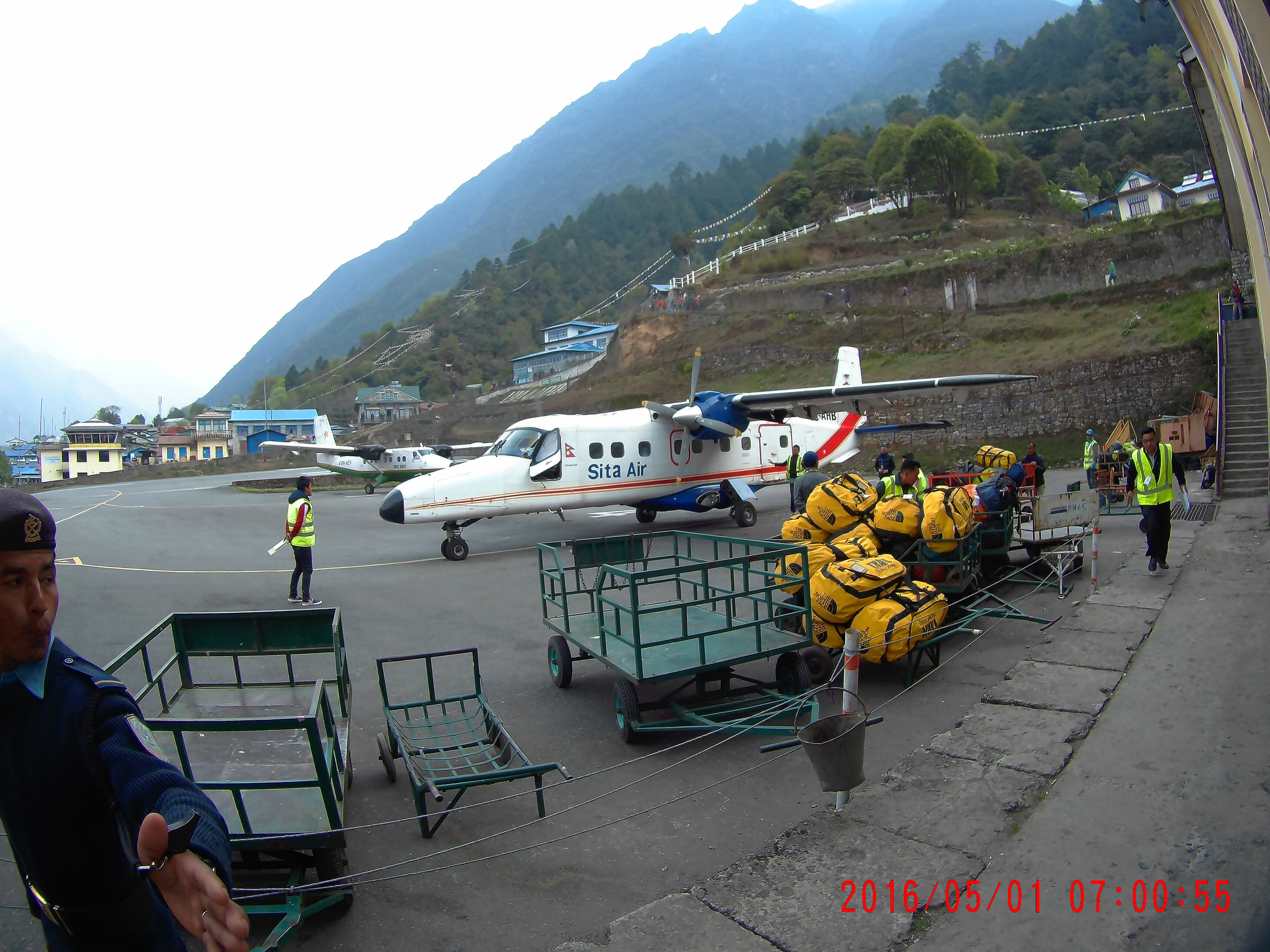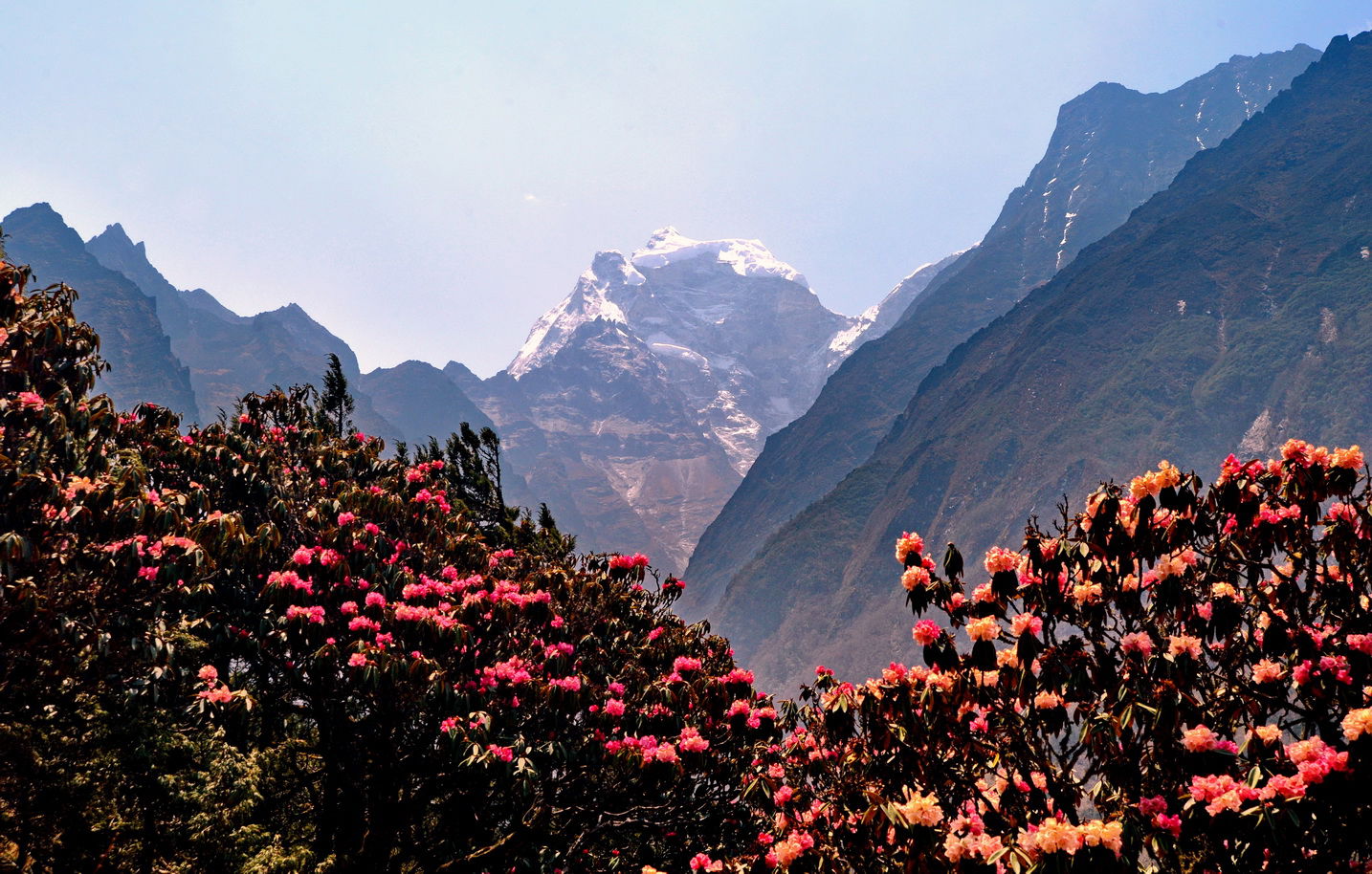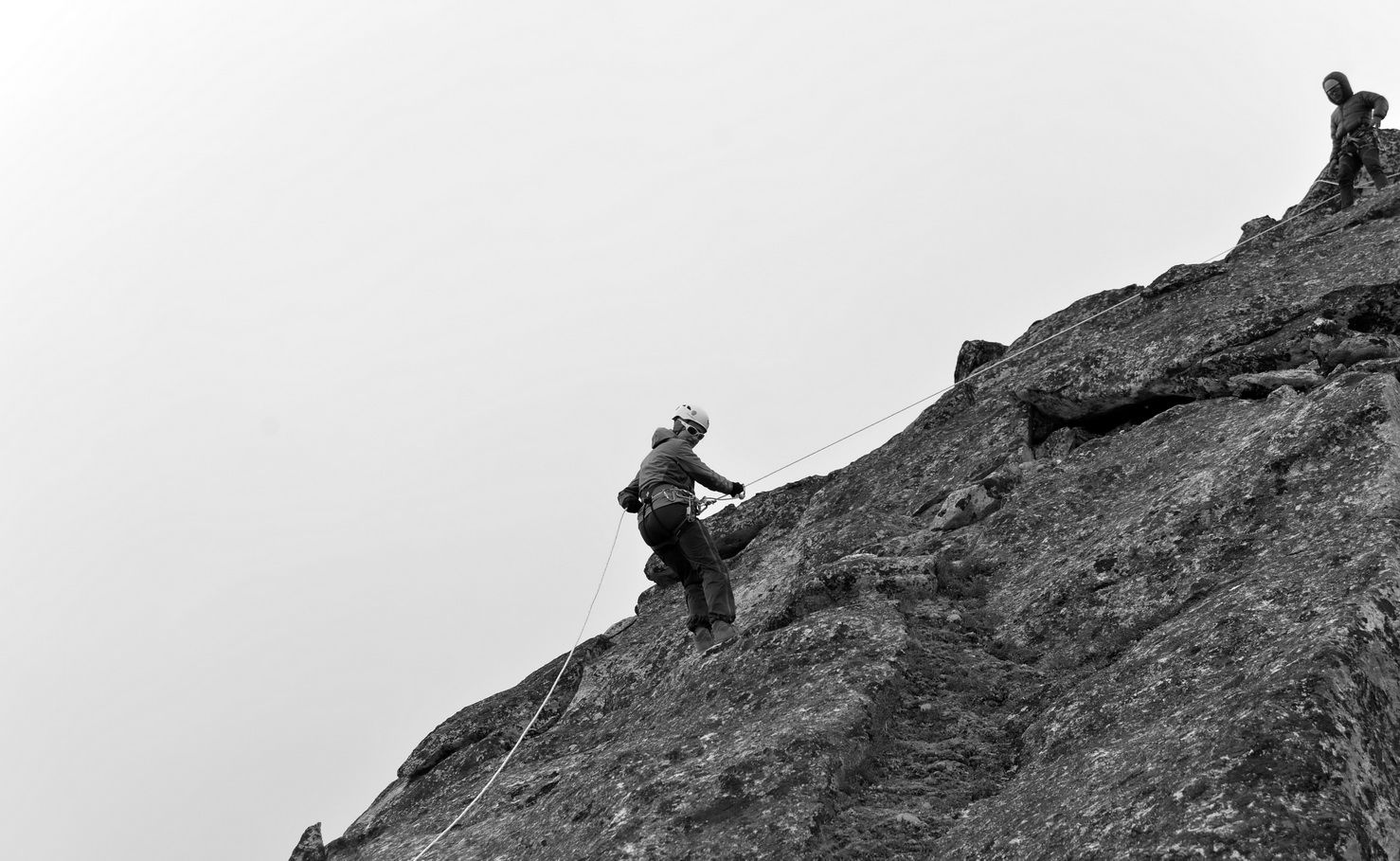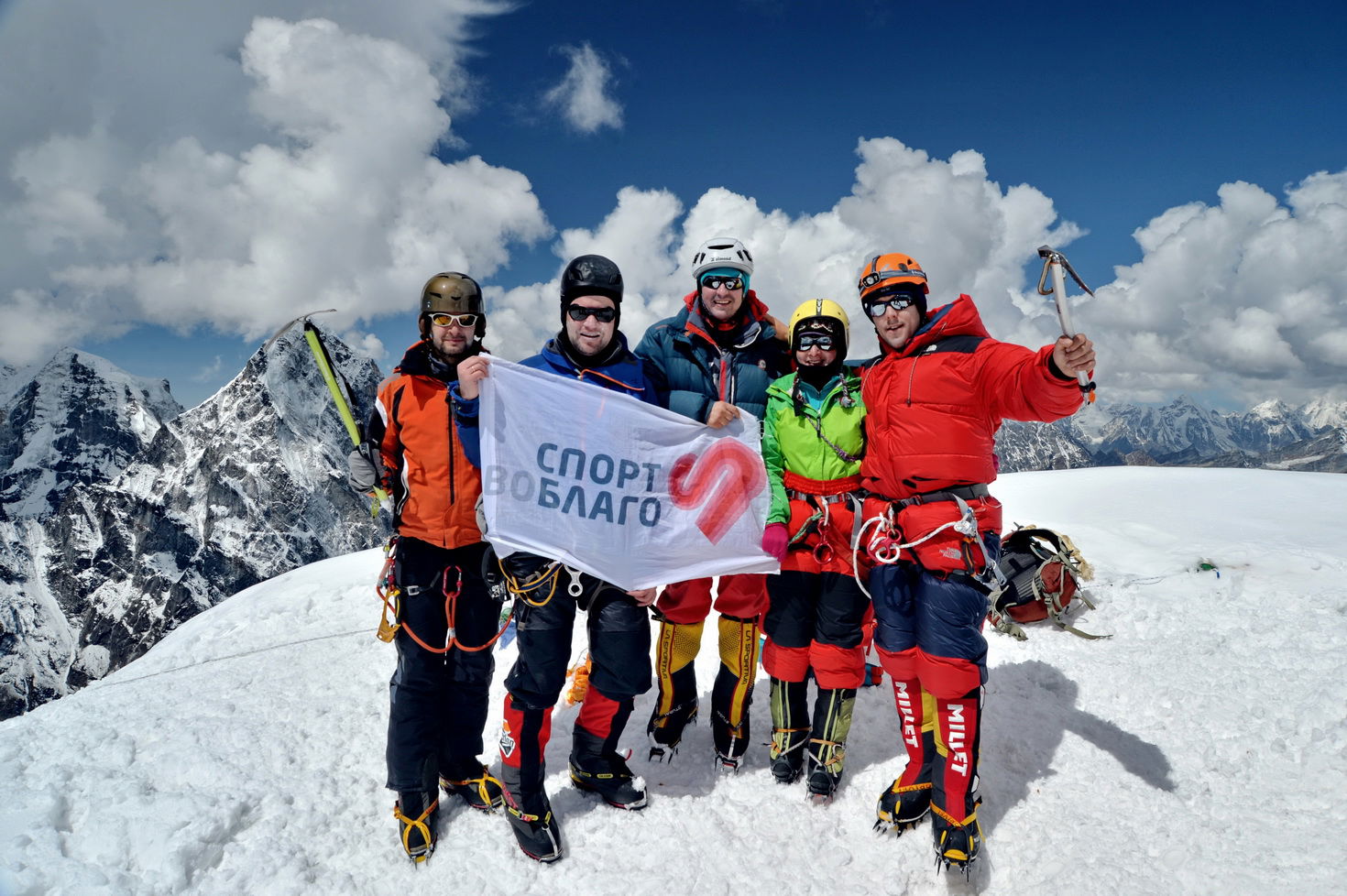THE LOBUCHE EAST CLIMBING EXPEDITION INTRODUCTION
The ascent to the Lobuche East Peak 6119, Nepal, Himalayas. The climbing expedition itinerary All about climbing Lobuche East Peak with Makalu Extreme Climbing Adventure Pvt Ltd.
Today my story is about climbing Lobuche East Peak 6119, Nepal, Himalayas, about service of our climbing expedition to Lobuche East Peak, and about what for our participants pay $ 2000 for a full service. I would like to draw Your attention to the fact that the services provided and their quality strictly correspond to this description.
The Peak Lobuche East, a brief overview Lobuche East (Lobuche East peak) - 6119 meters.
The second peak in the Lobuche massif, located in the Khumbu valley, Nepal. Lobuche East peak is included in the "trekking peaks" list of Nepal and belongs to class B. Classic routes to this peak are rated at least PD+. These are the most challenging routes of all the nearby "trekking peaks", such as Island Peak, Pokalde and Mera Peak. The first documented ascent of Lobuche East was made in 1984 by Lawrence Nielson and Ang Gialtsen Sherpa. Routes Southern ridge - the classic route The approach to the route is from the Periche valley, via Duglha (4,620 m). After crossing the river at the end of the Khumbu glacier, you need to climb to the pass where the memorial to those who died on Everest is located. Then go down to the North and follow the route of the track to the Cho La pass. The path will traverse the hillside above lake Tshola Tso. At the foot of Lobuche East Peak there is a large clearing where the Base Camp is usually set up. From BC, a one-and-a-half-hour climb up the rock outcrops to the ABC installation site. ABC is installed near a small lake located in a rock hollow at the beginning of the South-Western wall, at an altitude of approximately 5500 meters. The ascent to Lobuche East Peak starts from the Northern part of the lake, which is overhung by the rock wall Point 5551. You should be very careful, because there is a constant rockfall in this place. Hard hat is highly recommended.
The South-Western wall
The ascent runs along rock terraces with easy climbing II, in some places-III. The end point of the rock sections and the beginning of the southwest wall glacier is "Crampon Point". Here you need to dress the cat. The further route follows a snow-ice section (max. 55 degrees) with access to the South-Eastern Edge. Following it, in a westerly direction, you pass several false peaks and seraks. East Face Couloir East face Lobuche East is one of the most interesting walls in this part of the Himalayas. The first ascent was made by Jeff Lowe and Henry Kendal in 1986. The Eastern Wall is a pyramid of unstable rocks overhanging the village of Lobuche. The best way to approach the wall is from there-by climbing the nearby Western hill and descending to a small glacial lake at the foot of the wall. The couloir has four huge ice sections and faces the southern Edge. From there, the path to the top coincides with the classic route. Difficulty category: TD The standard period for climbing Lobuche East Peak is April- May and October-November. Lobuche East peak is one of the" acclimatization " peaks for climbers on mount Everest, Lhotse and Pumori, because it is located exactly on the path of approaches to these mountains. To climb the Lobuche East Peak, you must get a permit.
THE LOBUCHE EAST PEAK CLIMBING EXPEDITION ITINERARY:
Day 1. Our not virtual introduction starts at the international airport Tribhuwan. We personally- I, or Pasang Lama meet You at the airport with the logo of our company. The transfer can be individual or group, if you suddenly arrive at the same time with one of the participants. It takes about 20-30 minutes to get from the airport to the tourist center of Thamel, where our hotel is located. Our groups stay in a comfortable hotel decorated in the local national style. Rooms are equipped with cold and hot water, air conditioning, and water glasses. Participants of the "Full Service" program have 2 people per room. Participants of the program have VIP accommodation in VIP rooms, single accommodation. The package Price includes 3 nights in a hotel.
Day 2 Kathmandu-Ramechap-Lukla (2850)- Pakding (2300) The next day we have an early departure. We are going to Ramechap airport to fly from there to Lukla by private transport of our company. Only members of the expedition and their accompanying guides are allowed in the jeep or minibus. Flights to Lukla are operated by local Nepalese airlines on small, 20-seat planes. Lukla airport is one of the most dangerous airports on Earth. Its runway is very small and the slightest mistake can end in disaster. Therefore, flights are carried out only in good visibility, in good weather and on small planes. Flight from Ramechap to Lukla and transfer from Kathmandu to Ramechap and back are included in the price of the Lobuche East Peak climbing expedition The Lukla airport, a quick reference Tenzing and Hillary airport, formerly Lukla airport until 2008 — is a small airport in the city of Lukla in the Khumbu region, Solukhumbu district, 1st province in Eastern Nepal. It was recognized by the media as one of the most dangerous airports in the world. Due to its proximity to mount Everest, the airport is popular with climbers starting from Lukla. Several airlines operate flights here from Kathmandu, however, flights here are only possible during the day and subject to good visibility. The weather around the airport is unpredictable, and its instability causes frequent flight cancellations. The runway only accepts helicopters and short take-off and landing aircraft The airport was built in 1964 under the supervision of Edmund Hillary In January 2008, the airport was renamed in honor of the first Everest conquerors: Tenzing Norgay and Edmund Hillary, as well as to mark their contribution to the construction of the airport. The airport's 527-meter runway is located at a 12% gradient at 2,860 meters above sea level. Due to the difficult terrain, all landings are performed from end 06, and all take — offs are performed from 24. due to the large slope, the runway ends differ in height by 60 meters. End 06 is located right on the edge of a cliff that goes into a seven-hundred-meter abyss, and 24 — at the foot of a four-thousand-meter ridge. The apron is equipped with four Parking areas and a helipad. Take-offs and landings are performed exclusively by VFR, since the only navigation equipment at the airport is a radio station. Due to the difficulty of a successful landing, the civil Aviation Authority of Nepal has set high standards for pilots. Only experienced pilots who have previously made 100 or more landings on SUVS, have a total flight time of 1 year on SUVS in the airspace of Nepal, and have successfully completed 10 flights to Lukla with a certified instructor pilot can land at this airport. After landing at Lukla airport, we pick up the Luggage, distribute it to the porters and set off. Porters are included in the price of our tour climbing Lobuche East Peak. Each of the participants can give the porters 15 kg of their personal cargo. Today is a short day. We get to Pakding and settle in a very nice guest house called Sherpa. It is very clean and has a great kitchen. All food from Lukla to Lobuche Base Camp and back is ordered by the participants themselves from the menu. Meals during the trekking are not included in the price of our climbing expedition. There is a fairly extensive menu so everyone can choose their own food and drinks to their taste and preference. The approximate cost of one meal per person, in hotels on this route, according to 2019 data, was $ 15.
Day 3. Pakding 2350-Namche Bazaar 3550. Today we are going up to Namche Bazaar, the capital of the Sherpas. The height difference is 1200 meters. We leave no later than 9 am, so that all participants can reach Namche Bazaar no later than 3 PM. The quality of the trail is very good as it is the main trail of Nepal. It coincides most of the way with the path to the Everest Base Camp. Based on the result of the group's movement on the first day, the entire group will be divided into mini-subgroups based on the speed of movement. For every three participants, 1 guide is issued, so all participants can move in a comfortable mode for them. And so, until about 3 PM, all our participants will reach the urban-type village of Namche Bazar. We will spend 2 nights there for acclimatization. We are staying in a hotel near Jamling. This is a very clean hotel with excellent cuisine. As before, full service participants live for 2 people per room, and VIP participants - in single VIP rooms. I would like to focus separately on the description of the village Namche Bazaar. It is very clean, consisting of modern hotels and shelters, bakery and pubs, a mountain village. Namche Bazar is the capital of the Sherpas. The village is surrounded by huge Himalayan Mountains. It has its own, unforgettable atmosphere. Anyone who has been here at least once, definitely wants to come back here. The price level here is average, erroneous information is given in the network that, allegedly, everything is cheap here. In fact, this is not the case. Namche Bazaar is quite an expensive city. The village is very famous for tourists and climbers, because it is located on the road to mount Everest and has an expanded system of tourist hotels, restaurants, shops where tourists can relax and prepare for a hike. There is electricity in the village, and Syangboche airport (a helicopter station) is located nearby, but most tourists cannot use it: due to the protest of local residents, Lukla airport (located about 13 km South of Namche) is used for mass tourism. From the airport to Namche Bazaar, tourists must make a daily transition (in the case of a very fast walk, six hours is enough). Serving tourists on this site provides work and income to local residents. Namche Bazaar is also home of official offices, police control, a post office, and a Bank. At the top are the Nepalese army barracks. Namche Bazaar is the main point for traveling to Everest, to the mountain and Gokyo lake Above the village is the base of the Sagarmatha National Park, which offers views of mount Everest and other mountain peaks. At an altitude of 3800 meters above Namche Bazar, the luxury Everest view hotel offers views of mount Everest from its terrace when the weather is nice. The hotel organized arrivals for rich tourists, but many experienced acute mountain sickness from the sudden ascent to such a height. The hotel is additionally equipped with a dome and oxygen supply to the rooms. On Saturdays, the Bazaar opens in the morning, where residents of the surrounding villages converge, as well as Tibetans who come with goods through the passes from Tibet with Chinese goods Several Tibetan monasteries are located in the vicinity of Namche Bazaar. In the late 1980s and early 1990s, a small hydroelectric power station "Thame-Namche Bazar" with a capacity of 620 kW (two bucket turbines of 310 kW each) was built with the financial assistance of Austria to electrify the village and the nearby settlements of Khunde, Kumjung, and Thamo) The village is located at an altitude of 3440 m on a side slope of a hill. According to the 1991 census the village had 1,647 inhabitants in 397 households To the West of Namche Bazar is mount Kongde-Ri, 6187 m high, and to the East is mount Thamserku, 6623 m high.
Day 4. We will make a trekking tour in the surroundings of the village. The second day will go to the village Syangboche and observation point. We spend the second night in the same way, in Namche Bazaar.
Day 5. We are going further, towards the Base Camp. Overnight in the village Deboche. From the pass Syangboche first time, views of Lhotse and Everest. From here, we see our goal in full view for the first time. From Namche Bazaar to Deboche 6 hours of walking. The path first goes down to the river, and then again rises to the hill where the monastery of Tiangboche is located. The height here is 3900 m. We visit the monastery and get the blessing of the monks to climb. You can bed down in the village Deboche. We spend the night in a beautiful place, a loggia called Ama Dablam Lodge. This is one of the oldest and most comfortable loggias in the area with its own traditions. Day 5. Our way leads us to the Dingboche village. It's not a very long day with a very gentle climb. The village is located at an altitude of 4300. Here we will spend another night for acclimatization. Today we go up to the observation point 5300. Day 5. Lessons in mountain climbing. Today it is necessary to learn how to perform all mountaineering maneuvers on 5+, as we will have a very serious ascent. Movement on steep, multi-rope rocks, running, Dulfer And so, we are only two days away from Base Camp.
Day 6. Today we leave not very early, as it is not far to go, and it is better to go in warm weather. We go up to the village of Thukla at an altitude of 4600 meters. The village is located on the edge of the moraine. There are only 2 guest houses with a very primitive level of comfort and reasonable prices. From Dingboche to Thukla about 3, maximum 4 running hours.
Day 7. Tukla-lake Base Camp (5550). Today is quite a long day, so we leave Tukla early, around 7 am. The fastest participants will be able to reach the camp no earlier than 1 PM. And the medium and slow group will combine into one to free up another guide for fast movement. Today, the guides must fix 800 meters of rope on the Mountain, without which, tomorrow's summit push to the Top will be impossible. While the medium and slow group is approaching the camp, our rope team is already at the top of Lobuche East Peak. Usually the guys talk on the radio about the work done, and very quickly go down to the Camp. Distance Top-Camp by the lake on the descent of a professional rope guides, Sherpa nationality, passes in about an hour. I would like to draw Your attention to the fact that Lobuche East Peak is a very serious mountain. Use the services of travel agencies, whose guides have never gone fixing rope on this Mountain is strongly not recommended. Such experiments with your life can lead to tragic consequences. The fixed rope charge and its attachment are included in the price of the Lobuche East peak climbing expedition Camp accommodation in North Face V-25 tents. The food is prepared by the Yak driver, who is also the cook on this day. Accommodation and meals in the high-altitude camp are included in the price (cost) of the Lobuche East Peak climbing expedition
Day 8. The Summit Push! The ascent to the peak of Lobuche East 6119. We leave at about 11 am. From the beginning, our path goes along the rocks, which in the upper part become steep and icy. On the rocks to the beginning of the glacier from 3 to 5 hours. Here, a fixed rope will be hung on unpleasant areas. At the junction of the rocks and the glacier is a great place to relax. We relax, drink tea and fixed the crampons. Not a steep section is replaced by walls on the ridge. After three steps, we go to a very steep ridge, which leads to the Top. Top Of Lobuche East Peak! This is already Your serious mountaineering achievement! We shoot photos, videos, and interviews here. The descent is a large number of rappeling. About two o'clock in the afternoon we return to the camp near by the lake. We have a snack and continue the descent to Thukla. Overnight in Thukla
Day 9. The descent into Deboche. In Deboche gala dinner. We celebrate the victory!
Day 10. Trekking to Namche Bazaar
Day 11. Trekking to Packing Day 12.Trekking to Lukla
Day 13. Flight to Kathmandu
Day 14. Free day in Kathmandu and get certificates for climbing and a joint farewell dinner. On such a serious ascent, people who are usually not familiar with each other, at the beginning of the tour, become friends.
Day 15. The company's transfer takes all participants to the airport. We say to You: See you soon!
